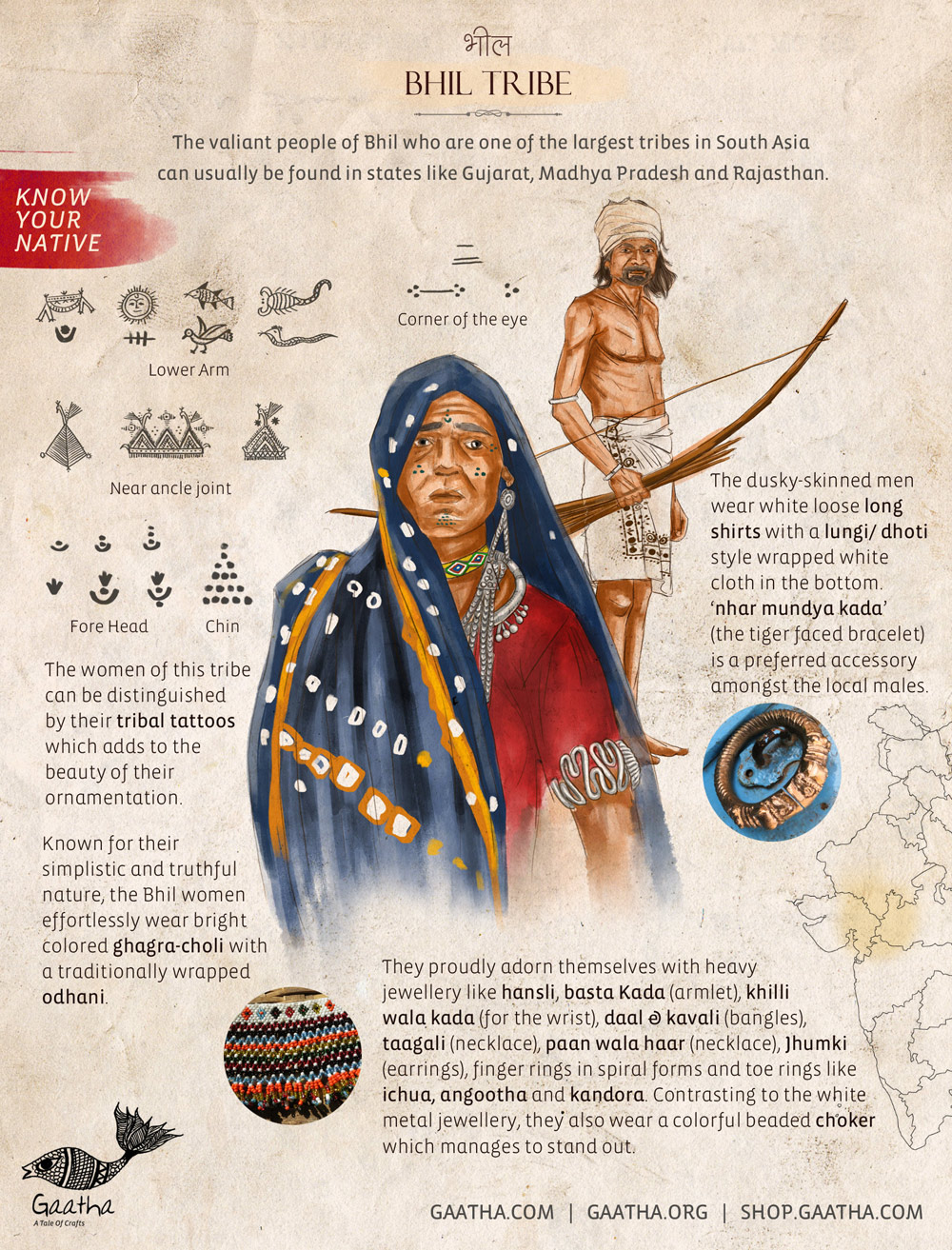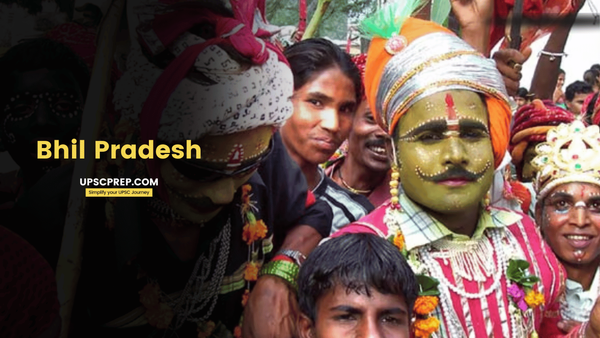Table of contents
Introduction
Bhil Pradesh is a proposed state in India primarily aimed at addressing the socio-economic and cultural needs of the Bhil tribal community.
The Bhils are one of the largest tribal groups in India, predominantly residing in the western and central parts of the country.

Geographical Spread
The proposed Bhil Pradesh would encompass regions from multiple states with significant Bhil populations. These regions include parts of:
- Rajasthan: Particularly the districts of Banswara, Dungarpur, and Udaipur.
- Madhya Pradesh: This includes districts like Jhabua, Alirajpur, and Dhar.
- Gujarat: Especially the districts of Dahod and Panchmahal.
- Maharashtra: Mainly the districts of Nandurbar and Dhule.
Tribes Living here
- Primary Tribe: The Bhil tribe is the major indigenous group in this region.
- Other Tribes: Other Scheduled Tribes also inhabit the area, including Garasia, Damor, and Meena.

Historical Context
The demand for Bhil Pradesh has its roots in the historical marginalization and socio-economic challenges faced by the Bhil community. The Bhils have a rich cultural heritage but have often been sidelined in the development processes of the states they inhabit.

Socio-Economic Conditions
- Education: The literacy rate among the Bhils is significantly lower than the national average. Efforts to improve educational infrastructure and access are crucial.
- Health: The Bhil community faces numerous health challenges, including malnutrition, lack of access to healthcare facilities, and high infant mortality rates.
- Economy: Predominantly dependent on agriculture and forest produce, the Bhils often face issues related to land rights, inadequate irrigation facilities, and lack of market access.
- Land Rights: Struggles with land ownership and rights, with many tribal people lacking formal titles to their ancestral lands.
Cultural Significance
The Bhils have a vibrant cultural identity with unique traditions, festivals, and art forms. Their traditional dance forms, music, and crafts are integral to their cultural expression.
Political Representation
The Bhil community has historically had limited political representation. The creation of Bhil Pradesh is seen as a way to ensure better political representation and address the community's specific needs.
Challenges and Controversies
- Administrative Challenges: The creation of a new state involves significant administrative restructuring and resource allocation.
- Inter-State Coordination: Since Bhil Pradesh would be carved out of multiple states, there would be inter-state coordination and resource sharing challenges.
- Opposition: Opposition comes from various quarters, including political parties and non-tribal communities, who fear that the creation of Bhil Pradesh might lead to further fragmentation and resource disputes.
GoI Measures and Schemes
- Tribal Sub-Plan (TSP): Aimed at ensuring adequate allocation of funds for the development of tribal areas.
- Forest Rights Act (FRA): This act grants legal recognition to the rights of traditional forest-dwelling communities, including land titles.
- National Rural Employment Guarantee Act (NREGA): Provides employment opportunities through guaranteed workdays in rural areas.
- Integrated Child Development Services (ICDS): Focuses on the health and nutritional needs of children and mothers.
- Mid-Day Meal Scheme: Provides free meals to schoolchildren to improve nutrition and encourage school attendance.
- Reservation Policies include reservations in education and employment to enhance opportunities for Scheduled Tribes.

Demands
- Formation of Bhil Pradesh: Creation of an autonomous region to better manage and address the unique needs of the tribal population.
- Increased Reservation: Enhanced reservation in education, employment, and political representation for Scheduled Tribes.
- Employment Opportunities: Development of local employment opportunities to prevent migration and ensure sustainable livelihoods.
- Improved Healthcare and Nutrition: Better healthcare infrastructure and nutritional programs to combat malnutrition and health issues.
- Educational Facilities: Improved access to quality education and vocational training to empower the youth.
- Protection of Land Rights: Secure land titles and protection from displacement to preserve their ancestral lands and way of life.
Current Status
Various tribal organizations and leaders continue to demand the proposal for Bhil Pradesh. However, the central government has not yet formally taken up the matter for consideration.
Conclusion
Various government schemes aim to address these issues, but the tribes demand the formation of Bhil Pradesh, increased reservation, improved local employment, healthcare, education, and protection of their land rights for a sustainable future.
The demand for Bhil Pradesh highlights the need for focused development and representation of tribal communities in India. While the creation of a new state is a complex and contentious issue, it underscores the importance of addressing the socio-economic and cultural needs of marginalized communities like the Bhils.
Previous Post